Blog do profº Ulysses TDBueno destinado a curiosidades, demonstrações, links, trabalhos, artigos, imagens e tudo que possa mostrar a matemática no mundo.
107 posts
Latest Posts by matematicaulysses - Page 2
WAVES — Visualizing sound through cymatics and resonant frequencies | Phenomena - from ABC Science
Uncovering the geometric nature of soundwaves. This is visualized by directing sound waves through water and salt. The water rests in an upright facing speaker, and the salt rests on a high frequency mechanical wave driver. When the devices are activated with specific frequencies, the water and salt particles vibrate in synchronization with the soundwaves, forming incredible geometric patterns. Phenomena fuses art and science together to explore naturally occurring patterns, and the fundamental forces of nature that create them, to take us on an ambitious, innovative, and psychedelic journey through the fabric of the universe. Filmmaker Josef Gatti recreates nine ‘phenomena’ to produce mesmerizing art films, which are then paired with an original music score by Kim Moyes from Australian dance music duo The Presets. #PhenomenaTV




Kelvin-Helmholtz clouds
are also known as “rotor clouds” and their spiraling pattern is the effect of a cloud generating a billowing wave pattern, which is a very rare occurrence. They happen when there is a severe vertical shear between two air streams, producing the upper-level winds to blow faster than the lower-level winds. Images © WSLS 10, Dave Throup, Vivian Knezevich


Which one are you? 🤠

Interlaced Hexagon, M.C. Escher
😯😯😯


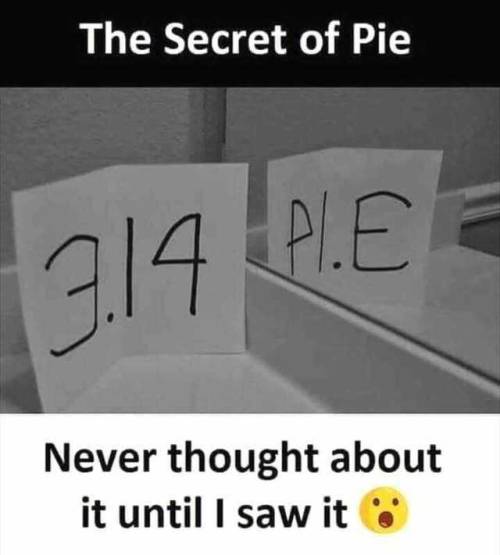
The secret of pie
whoa this guy knows how to party

Please remember not all formulas apply to all situations.
👌👌😄
😄😄😄


Maurits Cornelis Escher (Dutch, 1898-1972) - Encounter, lithograph on paper, 46.99 x 57.15 cm (1944)



💙💜❤️ BI? PI! ❤️💜💙
👋 How are U feeling? Let me know using only one emoji 👇
⋅ ⋅ ⋅
Animation by @daniel_maarleveld
#illusion #opticalillusion #grid #animation #generated #generative
Reposted from @visual.fodder
👍👍👍


Treating a human head the way a globe is treated by the Mercator projection.


Bruno Munari, (1960), The Square, Translation by corrainiStudio, Corraini Edizioni, Mantova, (2006-)2011, pp. 62-63
😆😆😆

The Complex Geometry of Islamic Design
In Islamic culture, geometry is everywhere. You can find it in mosques, madrasas, palaces and private homes. This tradition began in the 8th century CE during the early history of Islam, when craftsman took preexisting motifs from Roman and Persian cultures and developed them into new forms of visual expression.

This period of history was a golden age of Islamic culture, during which many achievements of previous civilizations were preserved and further developed, resulting in fundamental advancements in scientific study and mathematics. Accompanying this was an increasingly sophisticated use of abstraction and complex geometry in Islamic art, from intricate floral motifs adorning carpets and textiles, to patterns of tile work that seemed to repeat infinitely, inspiring wonder and contemplation of eternal order.

Despite the remarkable complexity of these designs, they can be created with just a compass to draw circles and a ruler to make lines within them, and from these simple tools emerges a kaleidoscope multiplicity of patterns. So how does that work? Well, everything starts with a circle. The first major decision is how will you divide it up? Most patterns split the circle into four, five or six equal sections. And each division gives rise to distinctive patterns.

There’s an easy way to determine whether any pattern is based on fourfold, fivefold, or sixfold symmetry. Most contain stars surrounded by petal shapes. Counting the number of rays on a starburst, or the number of petals around it, tells us what category the pattern falls into. A star with six rays, or surrounded by six petals, belongs in the sixfold category. One with eight petals is part of the fourfold category, and so on.

There’s another secret ingredient in these designs: an underlying grid. Invisible, but essential to every pattern, the grid helps determine the scale of the composition before work begins, keeps the pattern accurate, and facilitates the invention of incredible new patterns. Let’s look at an example of how these elements come together.

We’ll start with a circle within a square, and divide it into eight equal parts. We can then draw a pair of criss-crossing lines and overlay them with another two. These lines are called construction lines, and by choosing a set of their segments, we’ll form the basis of our repeating pattern.

Many different designs are possible from the same construction lines just by picking different segments. And the full pattern finally emerges when we create a grid with many repetitions of this one tile in a process called tessellation.

By choosing a different set of construction lines, we might have created this any of the above patterns. The possibilities are virtually endless.

We can follow the same steps to create sixfold patterns by drawing construction lines over a circle divided into six parts, and then tessellating it, we can make something like the above.

Here’s another sixfold pattern that has appeared across the centuries and all over the Islamic world, including Marrakesh, Agra, Konya and the Alhambra.

Fourfold patterns fit in a square grid, and sixfold patterns in a hexagonal grid.

Fivefold patterns, however, are more challenging to tessellate because pentagons don’t neatly fill a surface, so instead of just creating a pattern in a pentagon, other shapes have to be added to make something that is repeatable, resulting in patterns that may seem confoundingly complex, but are still relatively simple to create.

This more than 1,000-year-old tradition has wielded basic geometry to produce works that are intricate, decorative and pleasing to the eye. And these craftsman prove just how much is possible with some artistic intuition, creativity, dedication along with a great compass and ruler.
Calculating the surface area of a sphere. Found on Imgur.


Sum of Triangular Numbers.

If one remembers this particular episode from the popular sitcom ‘Friends’ where Ross is trying to carry a sofa to his apartment, it seems that moving a sofa up the stairs is ridiculously hard.
But life shouldn’t be that hard now should it?
The mathematician Leo Moser posed in 1966 the following curious mathematical problem: what is the shape of largest area in the plane that can be moved around a right-angled corner in a two-dimensional hallway of width 1? This question became known as the moving sofa problem, and is still unsolved fifty years after it was first asked.
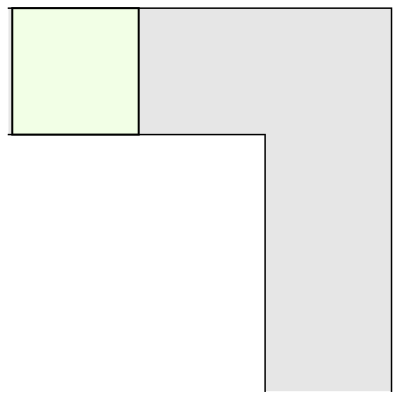
The most common shape to move around a tight right angled corner is a square.
And another common shape that would satisfy this criterion is a semi-circle.
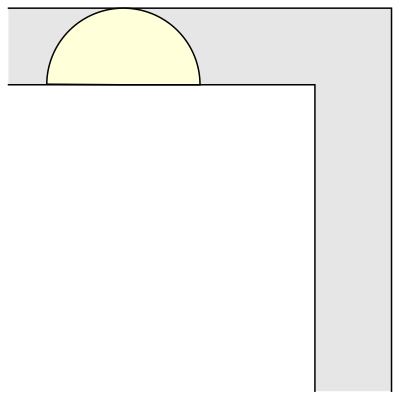
But what is the largest area that can be moved around?
Well, it has been conjectured that the shape with the largest area that one can move around a corner is known as “Gerver’s sofa”. And it looks like so:
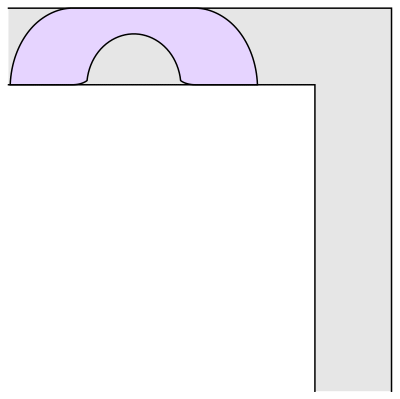
Wait.. Hang on a second
This sofa would only be effective for right handed turns. One can clearly see that if we have to turn left somewhere we would be kind of in a tough spot.
Prof.Romik from the University of California, Davis has proposed this shape popularly know as Romik’s ambidextrous sofa that solves this problem.
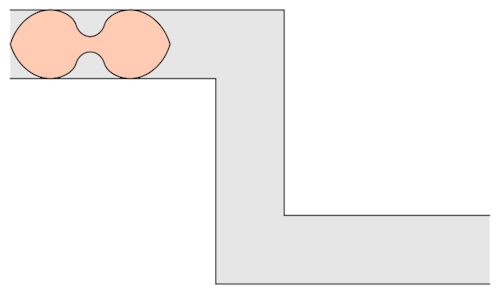
Although Prof.Romik’s sofa may/may not be the not the optimal solution, it is definitely is a breakthrough since this can pave the way for more complex ideas in mathematical analysis and more importantly sofa design.

Have a good one!
Two Dendritic Julia sets “Mating” to cover the sphere.
From the AMS-MAA Invited Address, What is the shape of a rational map? by Sarah Koch, University of Michigan. (Abstract) (paper 1) (paper 2)
Hear her discuss her talk and what it’s about here!
More about the Mating process and other videos of various types of Julia sets mating here!
Julia sets: numberphile

'Endless Loop'. Max Bill. 1953-1956.
👍👍👍







Bridget Riley Arrest Riffs
Started playing with this before realizing it is yet another Bridget Riley pattern. She gets me. Play in GeoGebra.
The regular hexagon hidden in a cube unfolds to a straight line on a net of the cube.

A cute complex analysis fun fact.